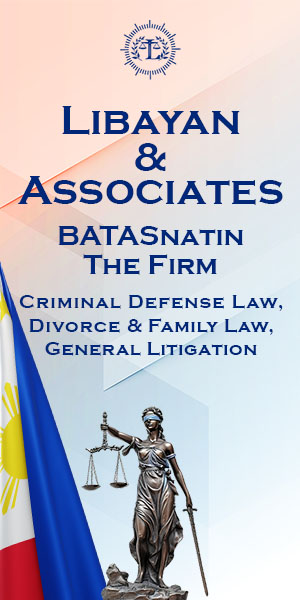DOCTRINES:
1. Definition of “Prior Operator Rule:” before permitting a new operator to operate in the territory of another operator already established with a certificate of public convenience, the PRIOR operator must first be given the opportunity to EXTEND its service in order to meet the public needs. Public operators must be shielded from ruinous competition by giving the prior operator the opportunity to IMPROVE his equipment and services before allowing a new operator to serve in the same territory.
2. An instance when the Prior Operator rule is NOT APPLICABLE is when the new operator is only granted a MAIDEN franchise, or one which does not really overlap with the entire route of the old operator but covers only a short portion of the old operator’s route AS A CONVERGENCE POINT. (So if a maiden franchise is granted to a new operator covering a portion of the old operator’s route, the Prior Operator rule cannot be invoked by the old operator to contest the grant of the new franchise).
[Note: this second doctrine was not really in the case but it is in the book of Perez p. 292, which, I think, more clearly emphasized the point of the case].
Facts:
Respondent Pablo Francisco applied for a Certificate of Public Convenience to operate 5 jeepneys along the Pinagbuhatan, Pasig – Shaw Blvd route which can be divided into 2 parts:
A. FROM: Barrio Pinagbuhatan, Pasig
TO: the poblacion of Pasig
B. FROM: the poblacion
TO: the INTERSECTION of Highway 54 (now EDSA) and Shaw Boulevard
Petitioners (all bus operators) contested the application of respondent and presented two witnesses:
1. Dantayana, an official inspector of the Commission: in an effort to prove that the available vehicles are in already in excess of the number actually needed to meet the needs of passengers in that area, he testified that the route to and from Pasig to Shaw Boulevard is already being serviced by buses that are usually left half-filled and jeepneys with only about 6 passengers each
2. Clemente, President of Mandbusco: testified that there was then about 125 buses operating between Pasig and Quiapo and about 51 jeepneys servicing the area to and from Shaw Boulevard to various parts of Pasig. He claims that this number of vehicles more than meets the transportation need of the public. He adds that Mandbusco already made considerable investments and the grant of the franchise to respondent would threaten his company’s financial stability.
Petitioners argue that because of the facts testified to by the 2 witnesses, the franchise applied for by respondent should not be granted.
The Public Service Commission granted the franchise to respondent, upon a finding that the public will be benefited thereby because there was NO DIRECT SERVICE from Barrio Pinagbuhatan to Shaw Boulevard at that time, and residents from Barrio Pinagbuhatan had to take 2 rides to reach the intersection and some of the establishments near there like the provincial hospital.
Petitioner filed an MR, which was likewise denied. They now file a Petition for Review with the SC on the ground that the PSC violated the Prior Operator Rule when it granted respondent his franchise.
Issue:
Whether the Commission erred when it granted the franchise to respondent
Ruling:
Decision of the Commission granting the franchise to respondent is affirmed.
The court found that the Dantayana testimony only covered Part B of the route applied for by petitioner. As previously stated, Part B of the proposed route is a convergence point of passengers coming from other barrios in Pasig (not only Pinagbuhatan) and also those coming from Manila. His testimony failed to take into consideration the passenger traffic coming directly from Barrio Pinagbuhatan. The application of respondent was made for the benefit of those living in Barrio Pinagbuhatan so the testimony of Dantayana, not having included the passenger traffic directly from there, is irrelevant to the issue at bar.
On the Clemente testimony, the court found that the buses and jeepneys referred to did not actually run the full route applied for by respondent. The overlapping of service exists only with regard to the second part of that route (Part B above), and this is clearly unavoidable since the stretch of road from the Pasig poblacion to the intersection serves as a common access to Highway 54 where passengers embark for separate destinations.
Lacking any positive proof that the petitioners already adequately served the transportation requirements of the inhabitants of barrio Pinagbuhatan and other nearby places, the Court refused to overturn the decision of the PSC, especially since that decision is reasonably supported by evidence.
The petitioners invoke the "old operator rule," which is to the effect that a public utility operator should be shielded from ruinous competition by affording him the opportunity to improve his equipment and service before allowing a new operator to serve in the same territory he covers.
This rule has no application in this case because the certificate of public convenience granted to the respondent is a maiden franchise covering a route that connects barrio Pinagbuhatan and the intersection of Highway 54 and Shaw Boulevard. Mandaluyong Bus Co., Inc. operates about 3 buses on the line extending from barrio Pinagbuhatan to Plaza Miranda in Quiapo, which was essentially intended to cover the great distance run between barrio Pinagbuhatan and Quiapo, Manila (via all these roads: Pasig Boulevard, P. Sanchez, V. Mapa, Valenzuela, Old Sta. Mesa, Sta. Mesa Boulevard, Legarda, Tanduay, P. Casal, Ayala Bridge, Concepcion, Arroceros, Quezon Bridge and Quezon Boulevard…) On the other hand, the grant in favor of the respondent covers only a brief shuttle run of 8 kilometers linking barrio Pinagbuhatan directly with the Pasig poblacion and the crossing of Highway 54 and Shaw Boulevard.
Therefore, even though indeed overlapping with the route operated on by Petitioners, the route granted to Respondent was only a mere portion of it, and cannot be said to encroach on the right of Petitioners as prior operators.



 Spotify
Spotify  iTunes
iTunes  AppleMusic
AppleMusic  YouTube
YouTube 


